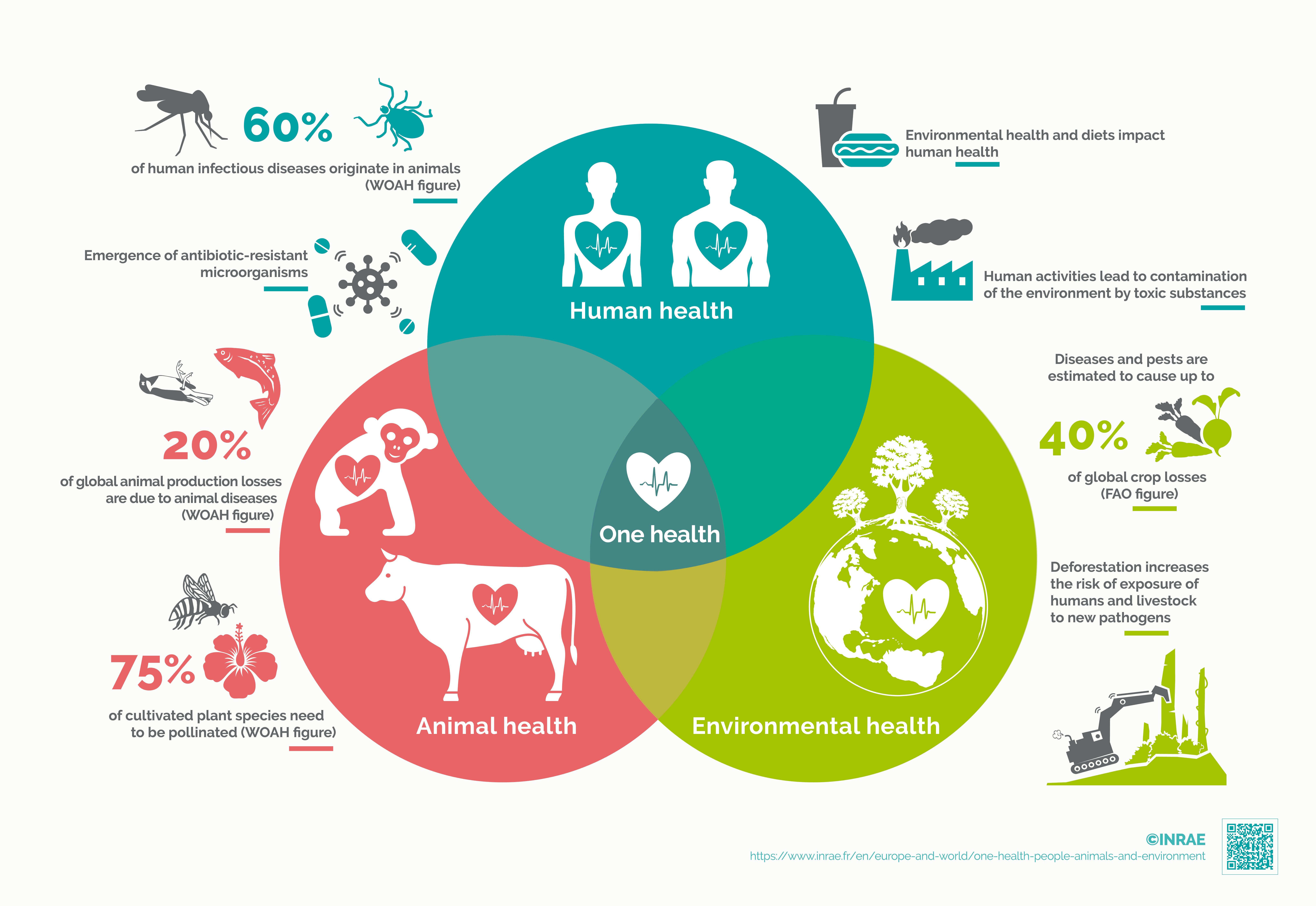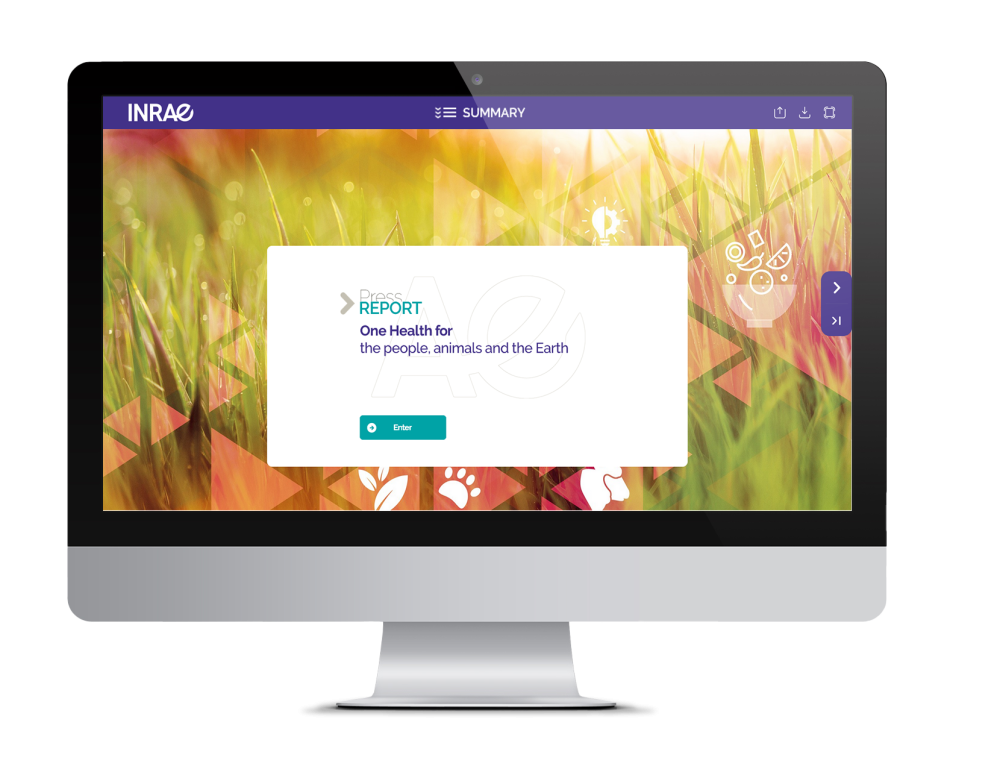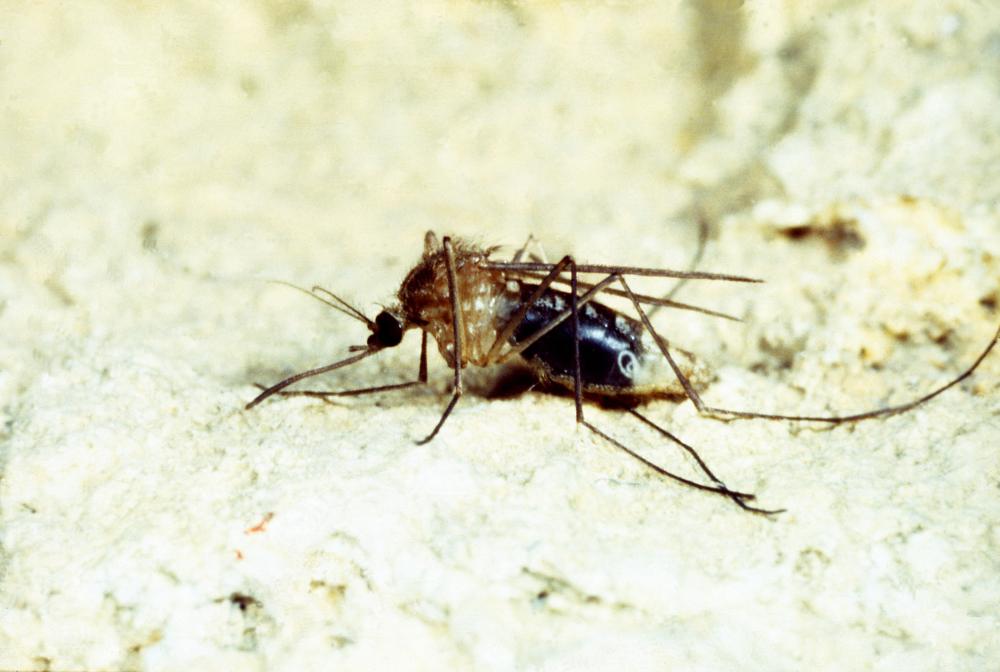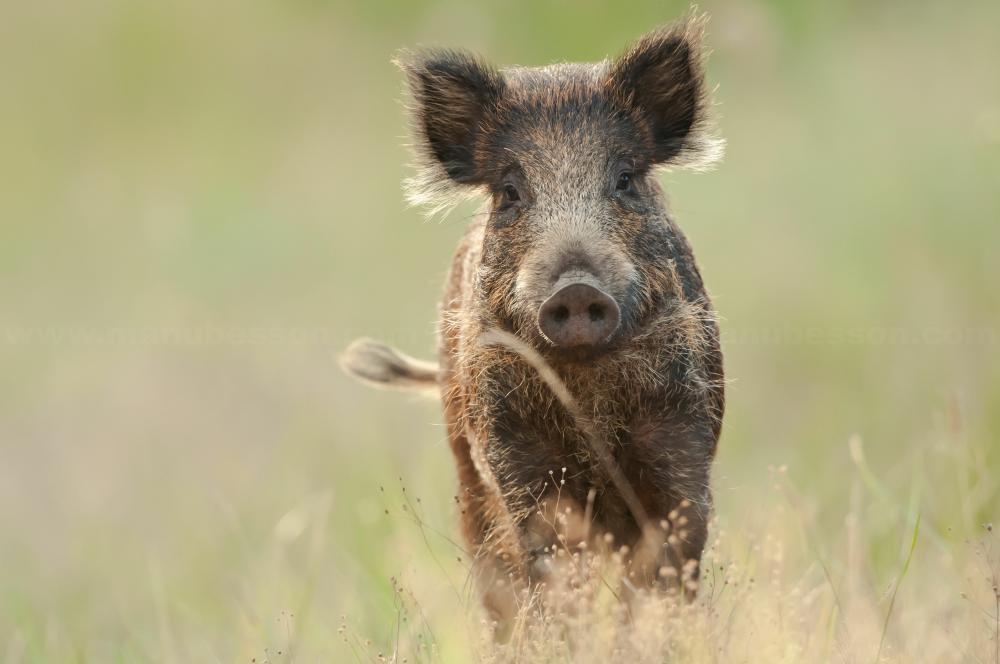One health for people, animals and environment
The spread of zoonotic diseases in recent years, such as Ebola and COVID-19, has underscored that public health challenges must be anticipated by deploying and combining discoveries in numerous disciplines. Only an interdisciplinary approach can provide the toolkit needed to grapple with the increasingly intense global challenges.
One Health, in one glimpse

Interactive press report
Preventing future pandemics
The Prezode initiative
Launched at the One planet Summit in January 2021, at the initiative of INRAE, IRD and Cirad, now supported by nearly 170 partners, including 15 governments, PREZODE is placing research on animal, human and environmental health at the heart of the global efforts needed to better understand, prevent, monitor, and detect early zoonotic pandemic risks.
Focus: understanding avian influenza in a One Health perspective
Avian influenza, particularly the highly pathogenic H5 subtype, poses a growing threat to animal health, biodiversity, food systems and public health. Known for its ability to spread rapidly and cross species barriers, H5 avian flu is considered a major sanitary concern worldwide, and a priority disease for international health agencies. As part of the European Horizon 2020 project WiLiMan-ID (Wildlife, Livestock, Man, Infectious Diseases), coordinated by the Host -Pathogen Interactions Laboratory (IHAP, INRAE,ENVT) and involving 14 partners across 11 countries, researchers study how high-priority infectious diseases, such as H5 avian influenza, emerge and spread across wildlife, livestock and human populations. The project integrates data from multiple scales to improve surveillance and inform prevention and control strategies.
In this video, Mariette Ducatez, a virologist at INRAE’s VIREMA-ID research unit (Virology, Epidemiology and Risk Management of Animal Infectious Diseases), shares insights from over 20 years of research on avian influenza. The video is part of The Deadly Five, a science communication series produced under WiLiMan-ID. It highlights five emblematic diseases at the human, animal, environment interface, and underscores the urgent need for a One Health approach to address emerging infectious threats.







